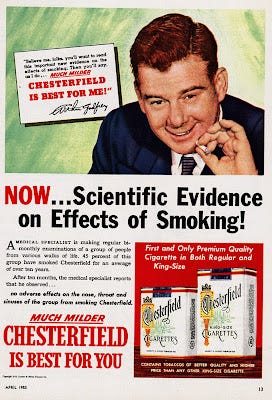Social Research and the Pitfall of Statistics
Integrity in data analysis isn't just a practice; it's a pivotal force that shapes success.
Navigating complex business decisions, formulating policies, or simply striving to grasp social trends more clearly—how you handle statistical data can fundamentally transform your outcomes.
Social research is integral to deciphering complex human behaviors and societal trends. However, while statistics serve as essential tools in this endeavor, their misuse or misinterpretation can significantly skew our understanding of social phenomena.
The Seduction of Numbers
"Statistics are the numbers with the tears wiped off," notes Ann Oakley, a renowned sociologist.
Numbers do not lie, but they certainly know how to tell a tall tale.
Statistics has ability to distill complex human experiences into neat, digestible figures. Yet, this perceived clarity can be dangerously misleading, masking the messy realities of social dynamics.
As sociologist Joel Best points out, "Not everything that can be counted counts, and not everything that counts can be counted."
"While numbers seem to provide a certain authority in research, they can often be misleading without a proper understanding of what they represent."
T. J. Hargittai, "Quantitative Data—The Numbers Game," The Journal of Educational Research, 2008.
Misleading Representations
A classic pitfall is the confusion between correlation and causation, leading to misleading conclusions. A humorous yet educational example is the comparison between the number of films Nicolas Cage appeared in a given year and the number of people who drowned by falling into a pool; these datasets show a surprisingly high correlation but clearly lack causation.
This example, often cited by statisticians like Tyler Vigen, serves to illustrate how correlation can be mistakenly interpreted as causation without substantive causal evidence.
Remember, just because two things walk together doesn't mean one brought the other to the party.
"Correlation does not imply causation; it is crucial for researchers to differentiate between merely statistical correlations and actual causative relationships."
Tyler Vigen, "Spurious Correlations," *Harvard Law Review*, 2015.
Selection Bias
Selection bias can dramatically impact the validity of statistical conclusions. An example of this is the Literary Digest poll error of 1936, where the magazine predicted Alf Landon would win the presidential election based on phone surveys that disproportionately sampled wealthier households—households more likely to have telephones during the Great Depression.
If you only talk to your own echo, don’t be surprised when the world sounds just like you.
This sample did not accurately represent the general American population, leading to a faulty prediction as Franklin D. Roosevelt won in a landslide.
"Selection bias can lead to conclusions that are systematically different from the truth, illustrating the importance of representative samples in research."
D. A. Freedman, "Statistical Models for Causation: What Inferential Leverage Do They Provide?" Evaluation Review, 2006.
Overgeneralization
Using a single brush to paint every wall might save you time, but expect a few mismatched rooms.
Overgeneralization is another significant concern. For instance, early research on drug addiction was primarily conducted among male subjects in urban settings, leading to treatments and policies that did not effectively address the patterns of addiction seen in women or those living in rural areas. Developed treatments, as a result, did little to help this widespread epidemic.
There is danger of applying findings universally without considering demographic and contextual differences.
"Generalizing findings without sufficient justification may lead to erroneous conclusions that fail to account for varied experiences and conditions."
K. Roth, "Generalizability in Qualitative Research: From an Authentic Criteria to Bounded Generalizations," Qualitative Sociology Review, 2014.
The Impact of Presentation
The way statistics are presented can alter their interpretation.
An infamous case is the Fox News graph showing Obamacare enrollment numbers that dramatically misrepresented proportions by manipulating the graph's y-axis, making the final numbers appear insignificant compared to the projection. Such graphical misrepresentations can significantly skew public perception.
A graph may be worth a thousand numbers, but a skewed one might tell a thousand lies.
"The visual display of quantitative information can drastically influence interpretation, highlighting the need for ethical standards in graphical representations."
Edward R. Tufte, "The Visual Display of Quantitative Information," Graphics Press, 2001.
Statistical Significance vs. Practical Significance
The distinction between statistical and practical significance is crucial yet often overlooked. In a widely cited example, a medical study may show a statistically significant reduction in disease symptoms with a new drug, but the actual effect size might be minuscule—imperceptible to patients.
Being statistically significant is like being famous on Instagram; it sounds impressive until you ask what it’s for.
As epidemiologist Geoffrey Rose stated, "A small shift in a large population can be more impactful than a large shift in a small trial group, yet the latter might seem more statistically significant."
"Researchers must distinguish between statistical significance and practical importance to avoid misleading claims about the effectiveness of interventions."
Jacob Cohen, "The Earth is Round (p<.05)," American Psychologist, 1994.
Ethical Considerations
Playing fast and loose with statistics is like juggling swords; sooner or later, someone’s going to point out you’re not using rubber chickens.
Ethics in statistics is paramount, especially when data is used to shape public policy or corporate strategy. A pertinent case study is how tobacco companies historically used misleading statistics to downplay the health risks of smoking.
Despite evidence to the contrary, these companies promoted data from short-term studies that showed no significant health deterioration in smokers, heavily influencing public opinion and policy for decades.
"Misrepresenting statistical data, whether intentionally or not, can have significant ethical implications, influencing public policy and individual decisions based on flawed information."
R. L. Wasserstein, N. A. Lazar, "The ASA's Statement on p-Values: Context, Process, and Purpose," The American Statistician, 2016.
Statistics, while powerful, carry inherent risks of misinterpretation and misuse. It is the responsibility of researchers, policymakers, and professionals to approach statistical data critically, ensuring that their interpretations and applications reflect both the complexities of real-world dynamics and the nuances of human behavior.
By acknowledging and addressing these pitfalls, we can better harness the power of statistics to inform more effective and ethical decisions across the spectrum of social research.
Whether you are navigating complex business decisions, formulating policies, or simply striving to understand social trends better, the integrity with which you handle statistical data can make a profound difference.
For those looking to dive deeper into the ethical application of statistics or seeking strategic consultation to leverage data effectively without falling into common traps, I'm here to help. My expertise lies in discerning the nuances of data and ensuring that your strategies are both statistically sound and aligned with your organizational goals.
Let's read data, not skew it, and make smarter decisions to drive your business forward.
If you're ready to enhance your approach to data and decision-making, you can set an appointment with me via email.
Until next time,
Madeline Diane.











![POLITICS - 1936 ELECTION]. [LANDON, Alfred "Alf" (1887-1987)]. A large group of campaign ephemera from the 1936 Landon/Knox presidential run. POLITICS - 1936 ELECTION]. [LANDON, Alfred "Alf" (1887-1987)]. A large group of campaign ephemera from the 1936 Landon/Knox presidential run.](https://substackcdn.com/image/fetch/$s_!86nZ!,w_1456,c_limit,f_auto,q_auto:good,fl_progressive:steep/https%3A%2F%2Fsubstack-post-media.s3.amazonaws.com%2Fpublic%2Fimages%2Fc3260420-4b3c-41ae-ad7a-a7783da0b131_1600x1200.jpeg)









